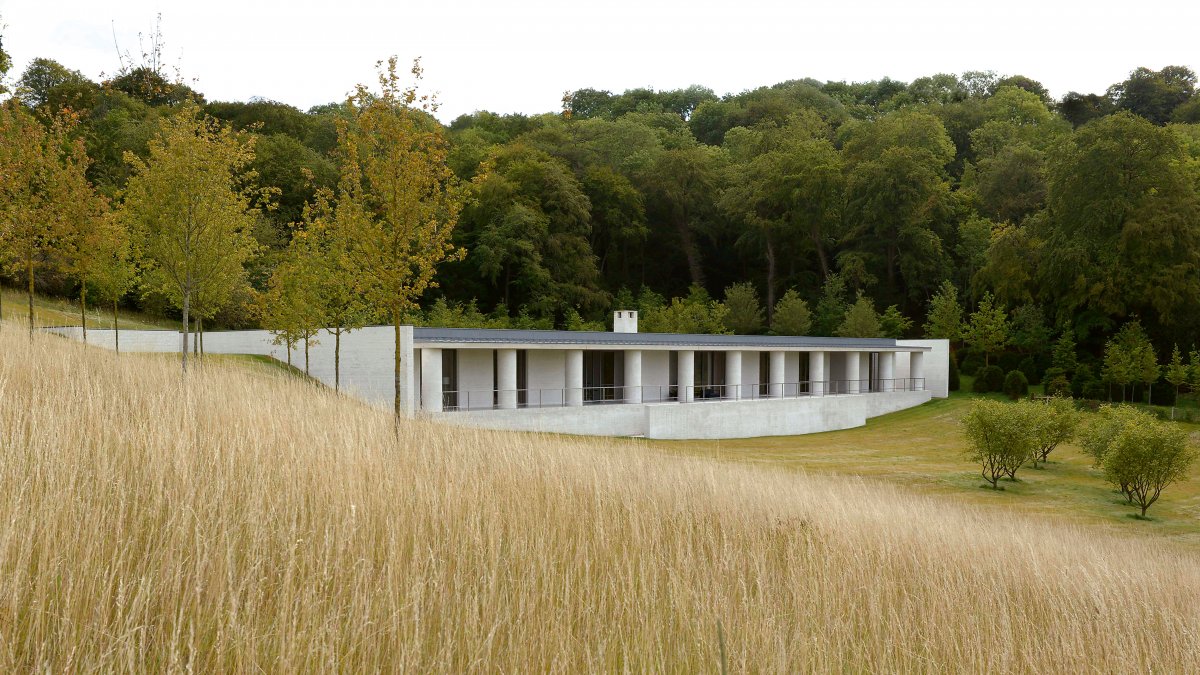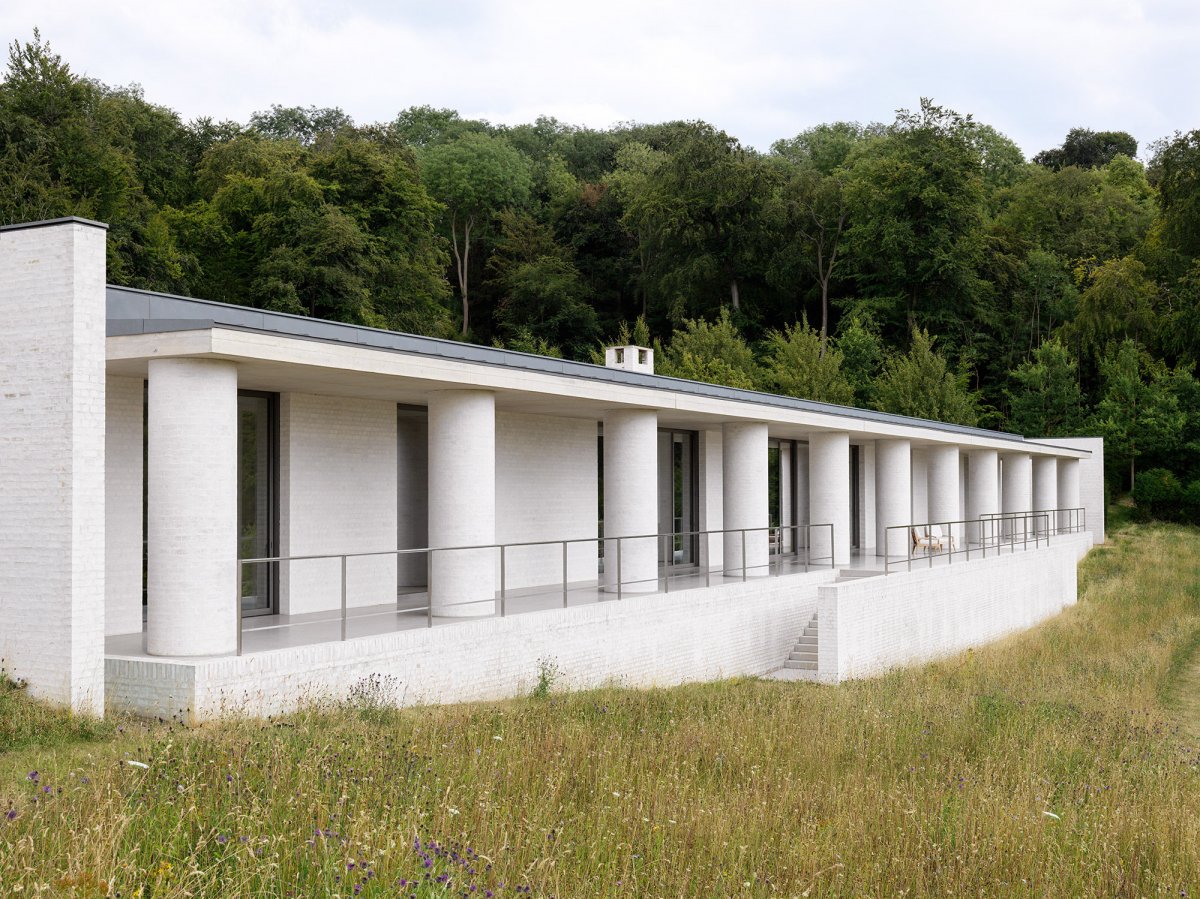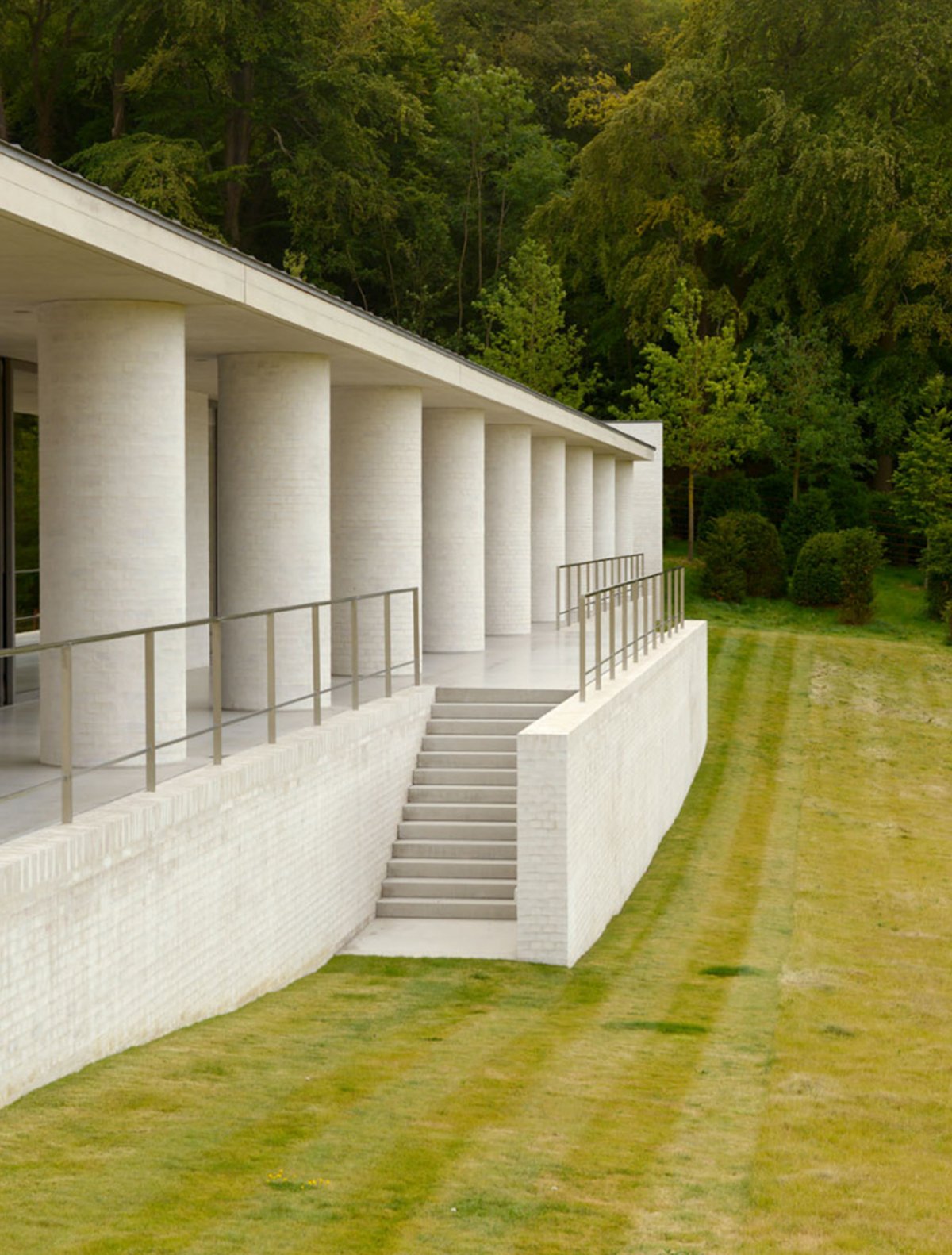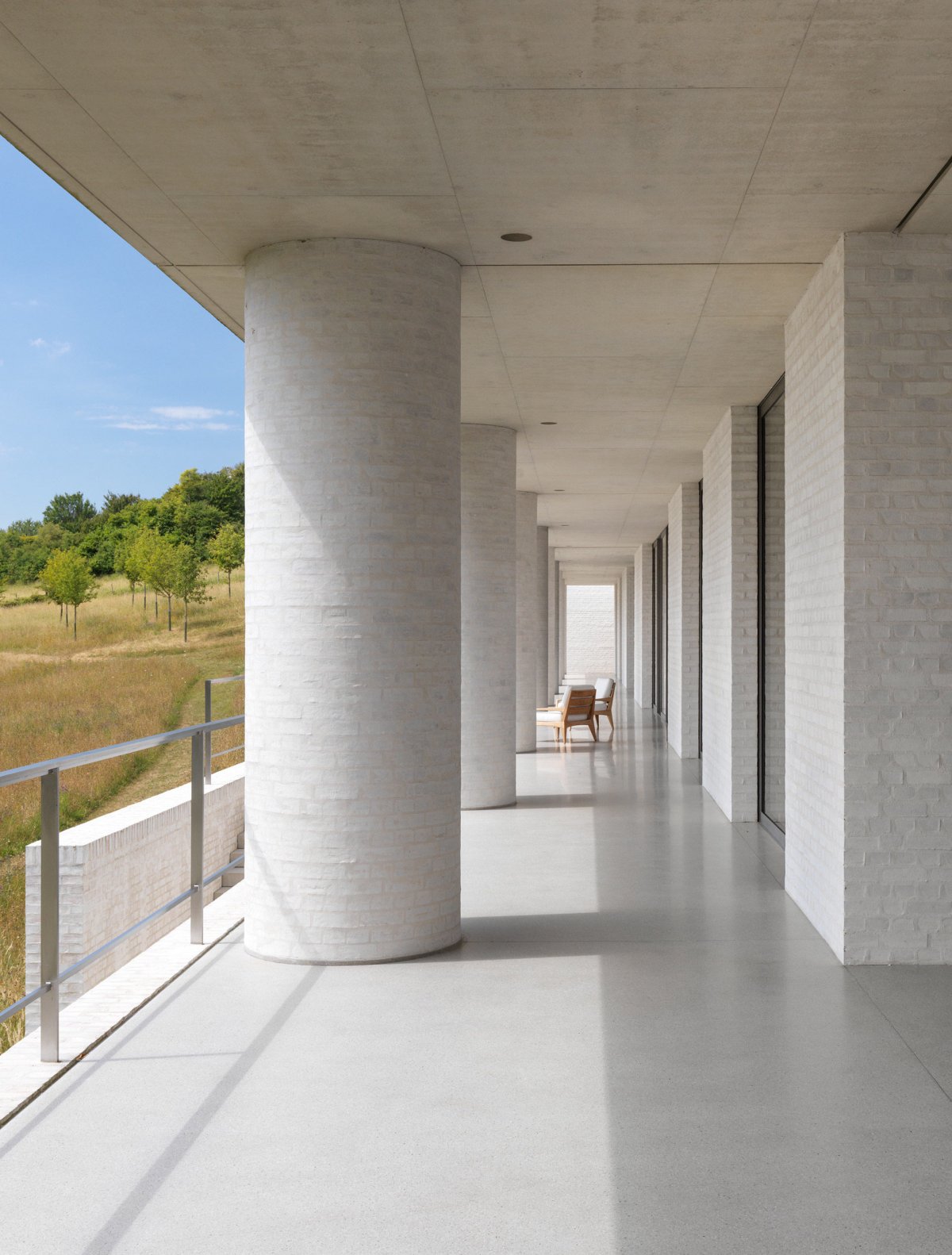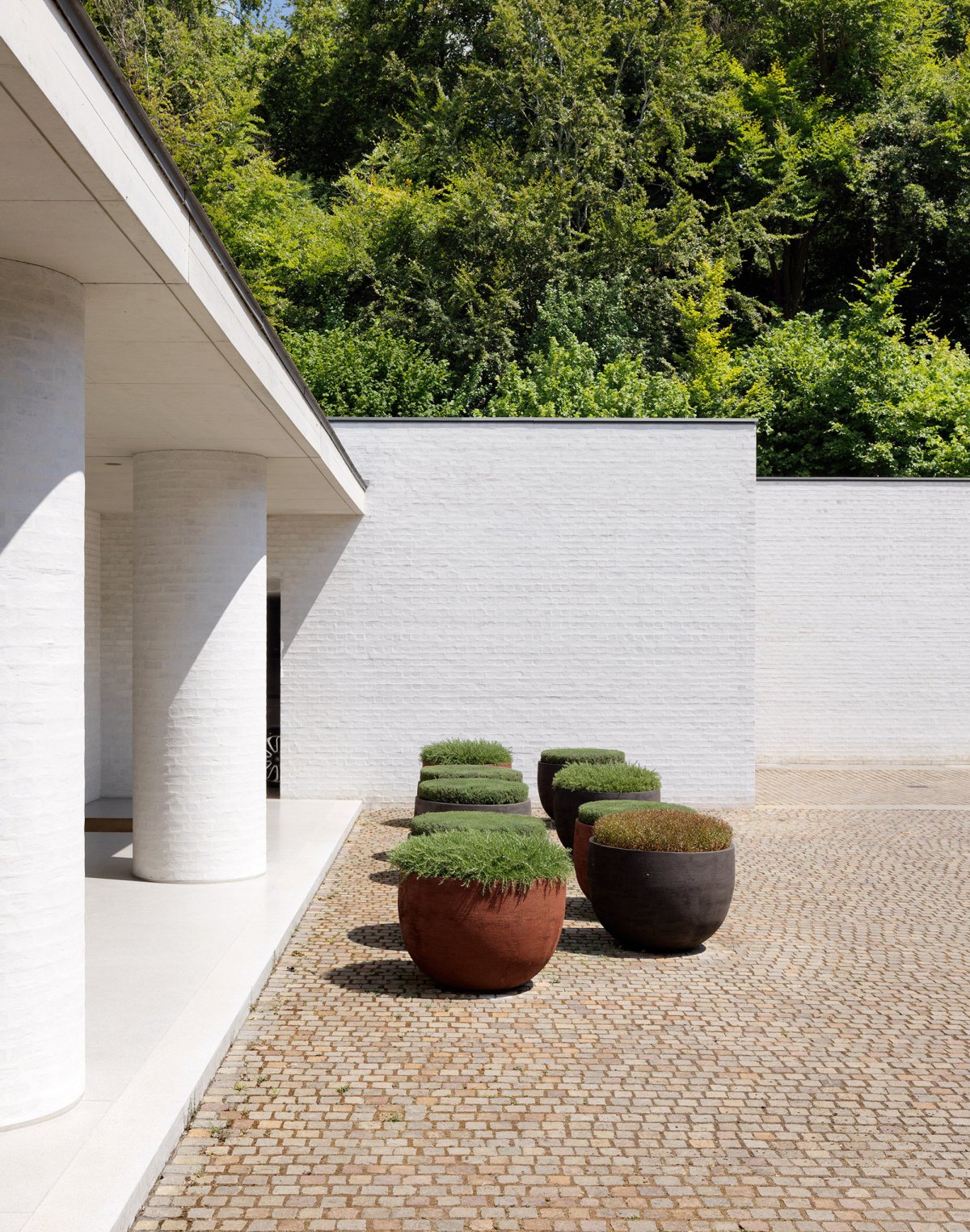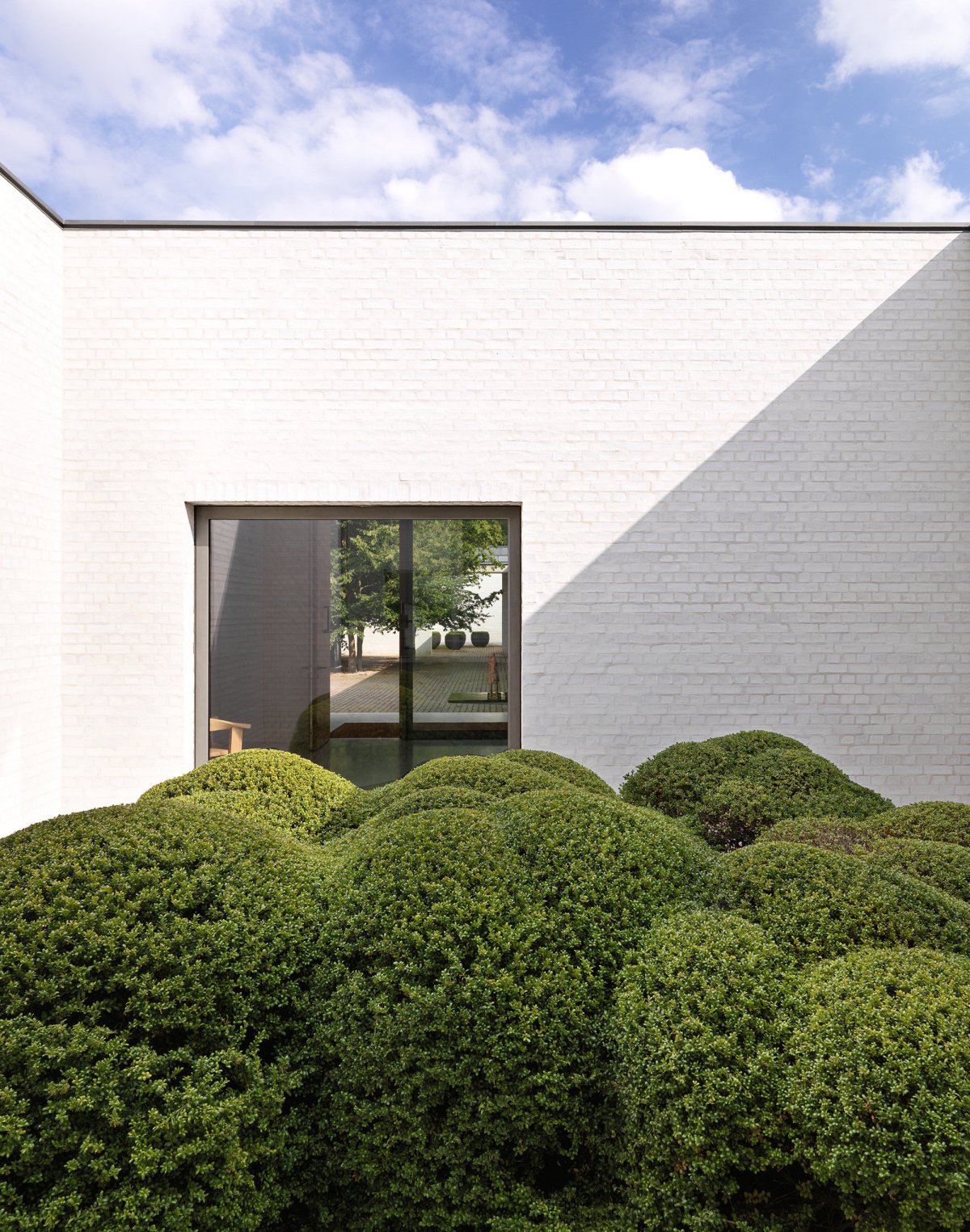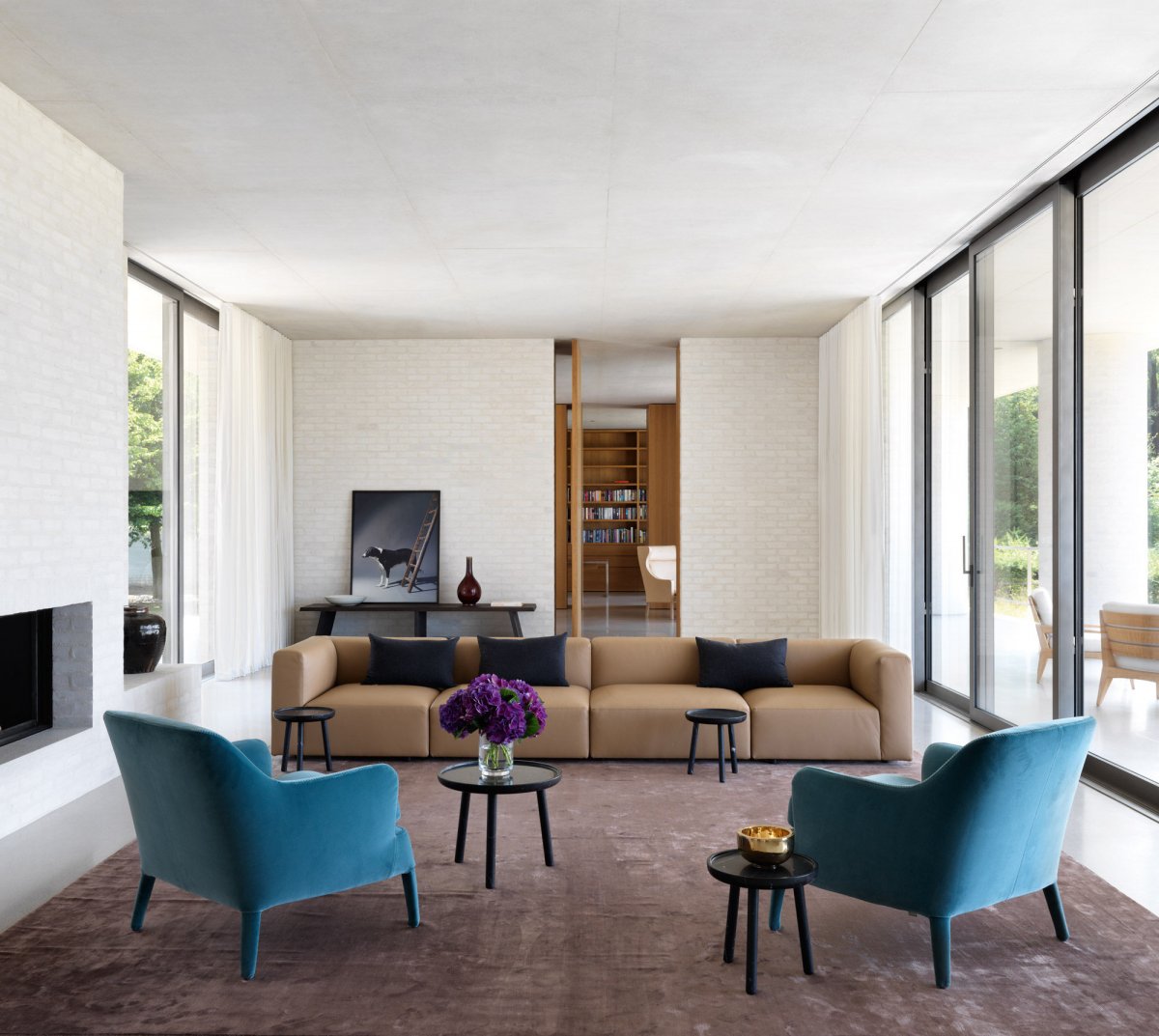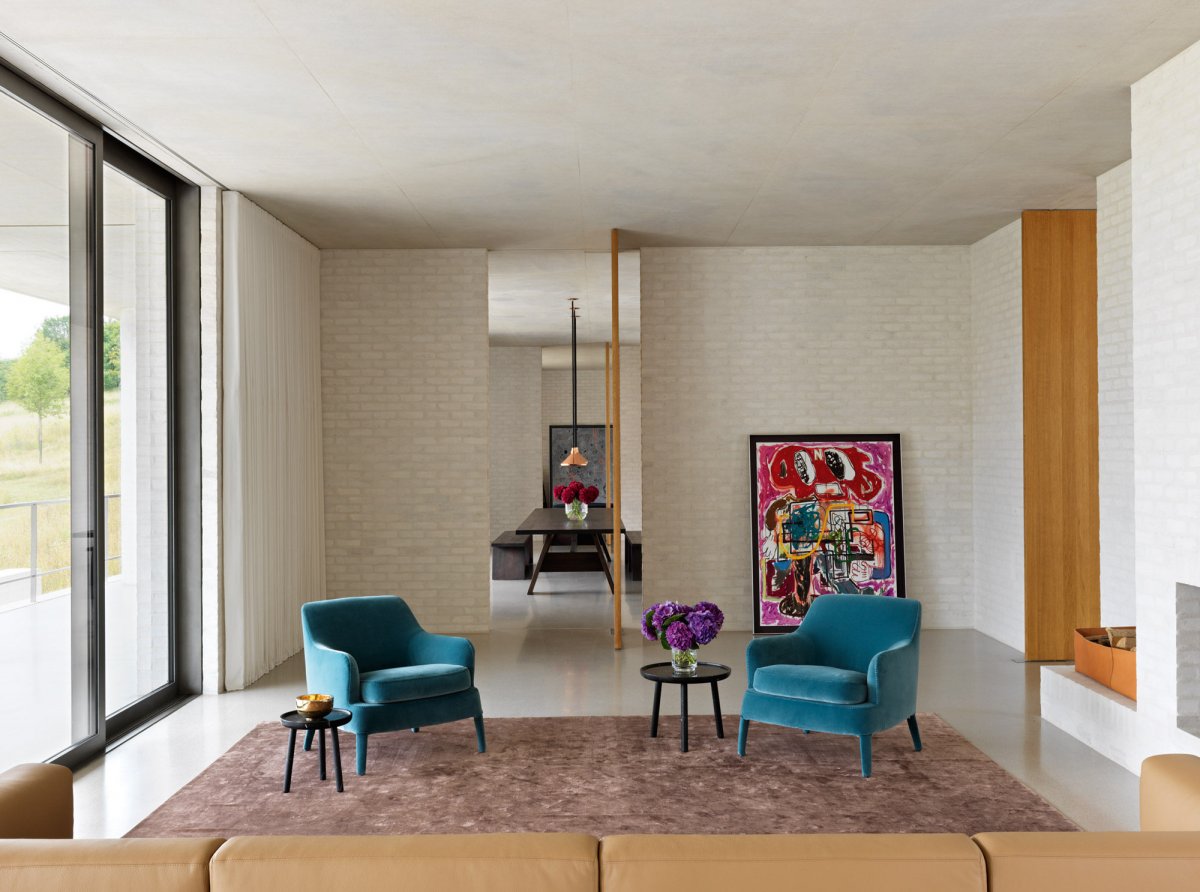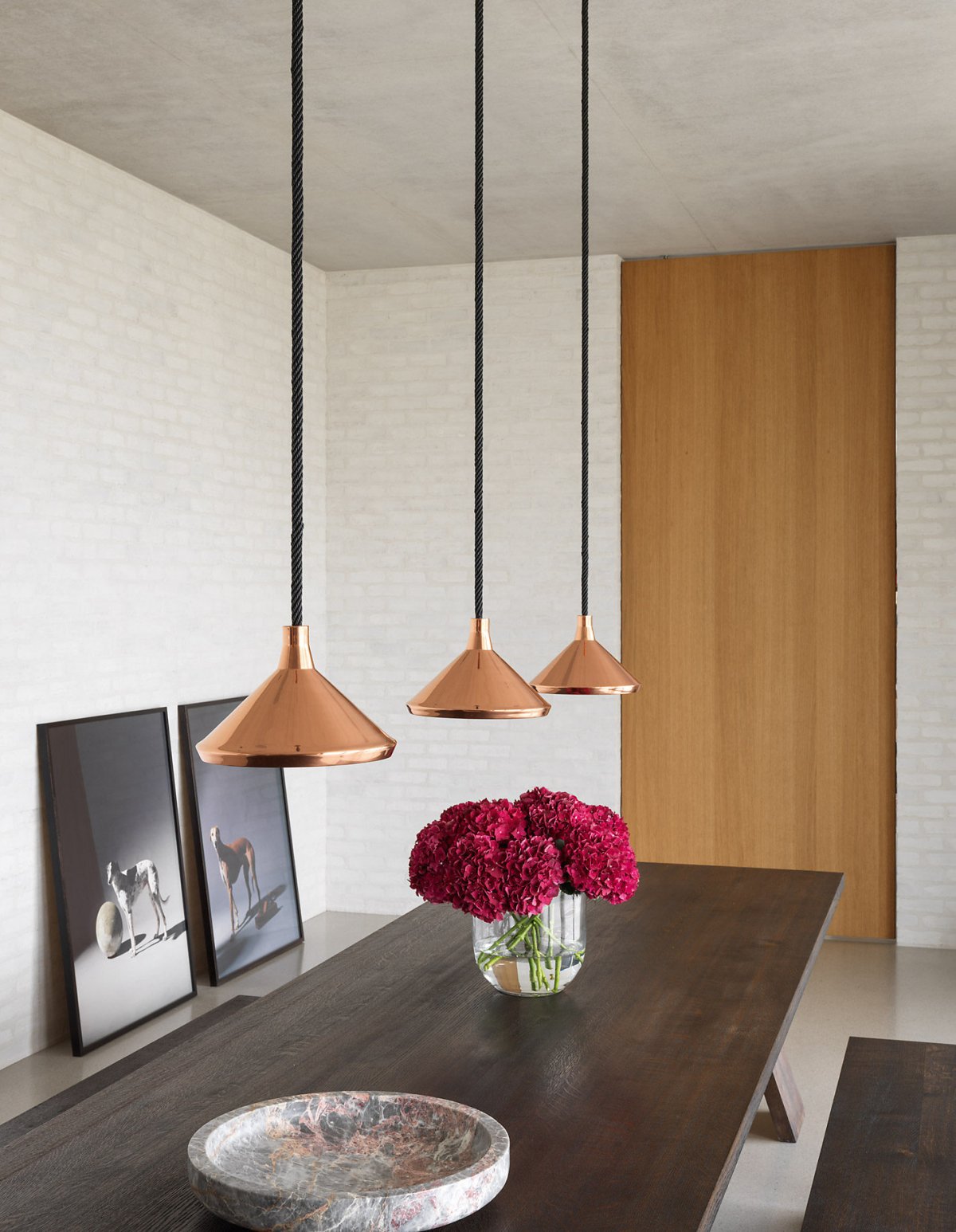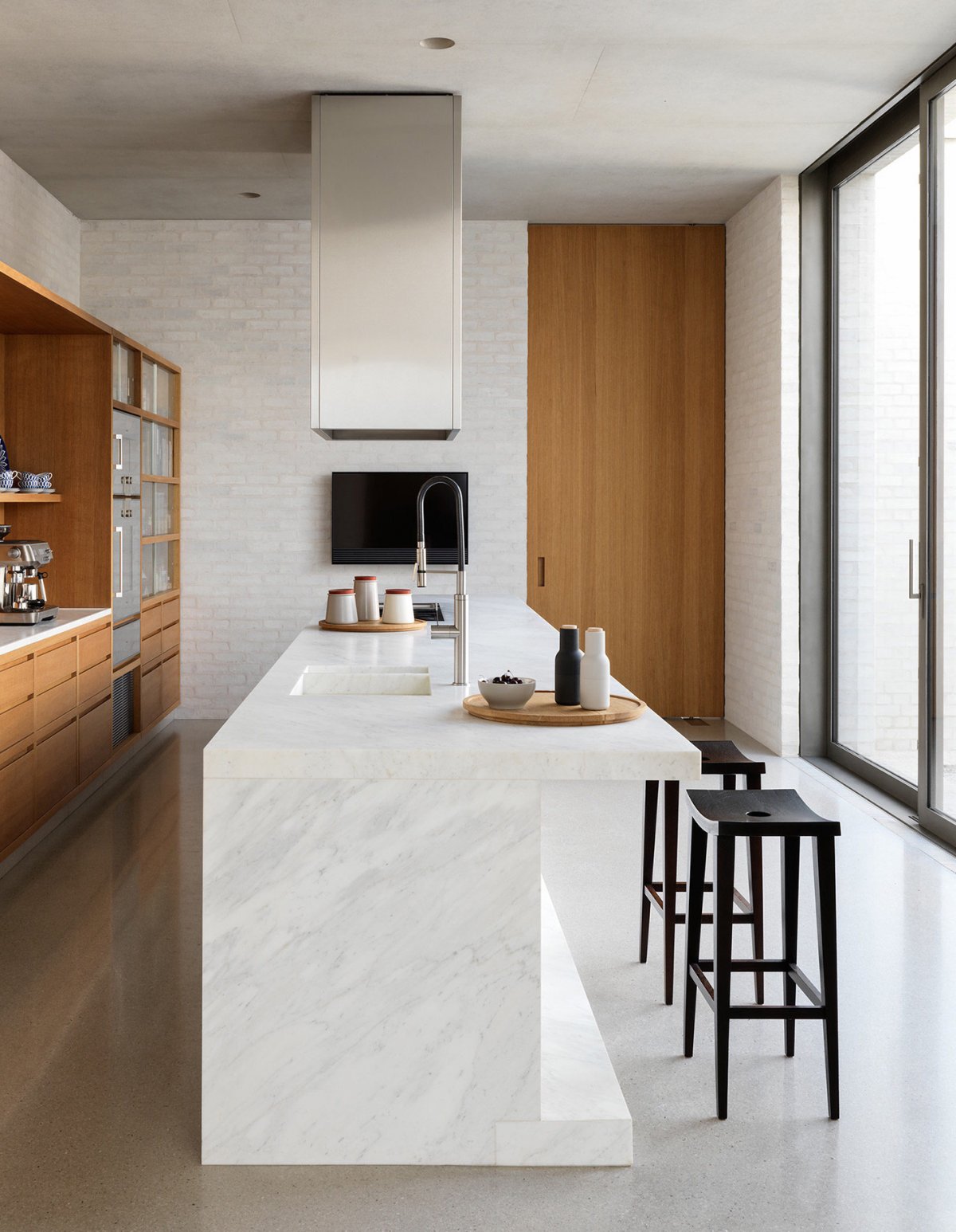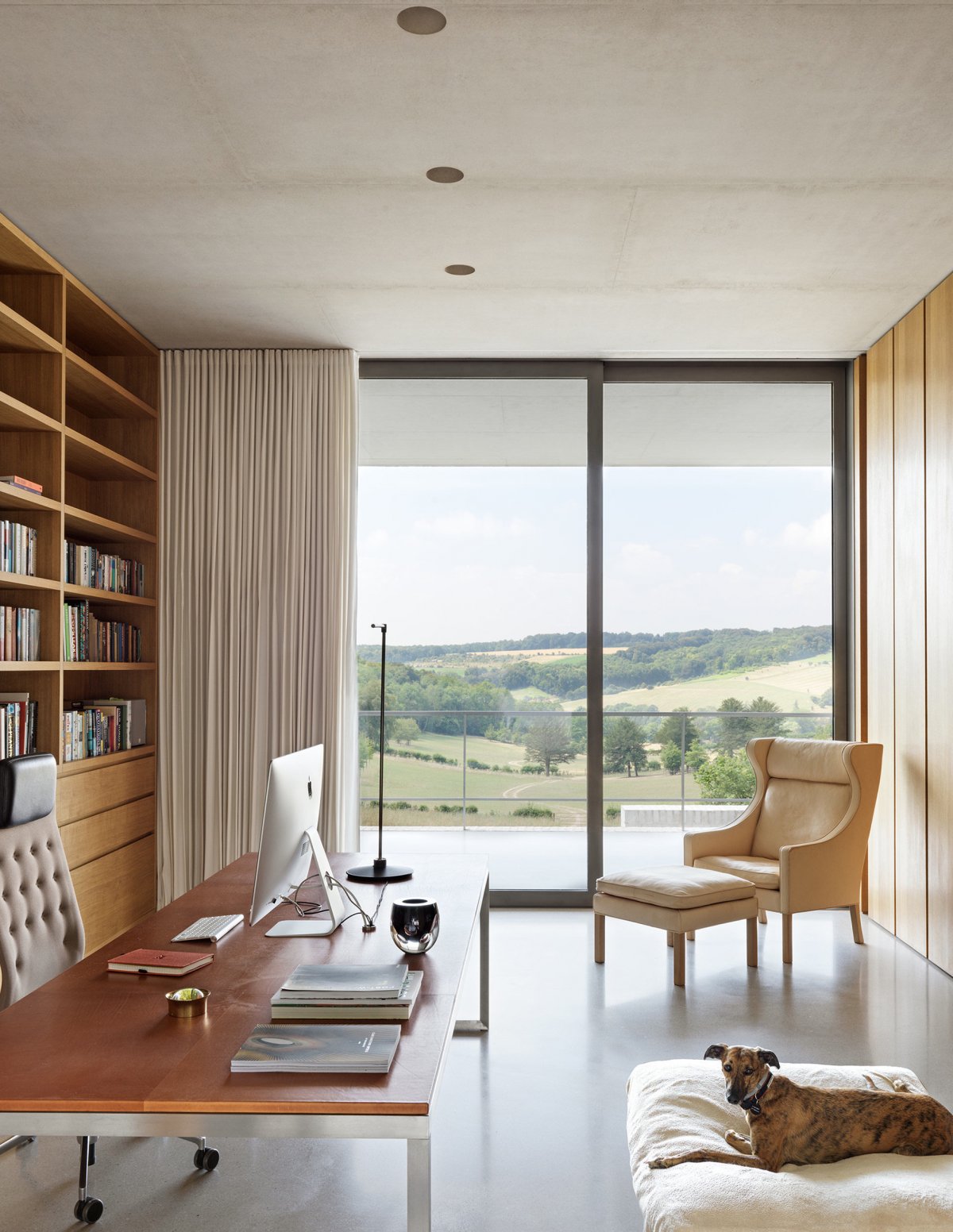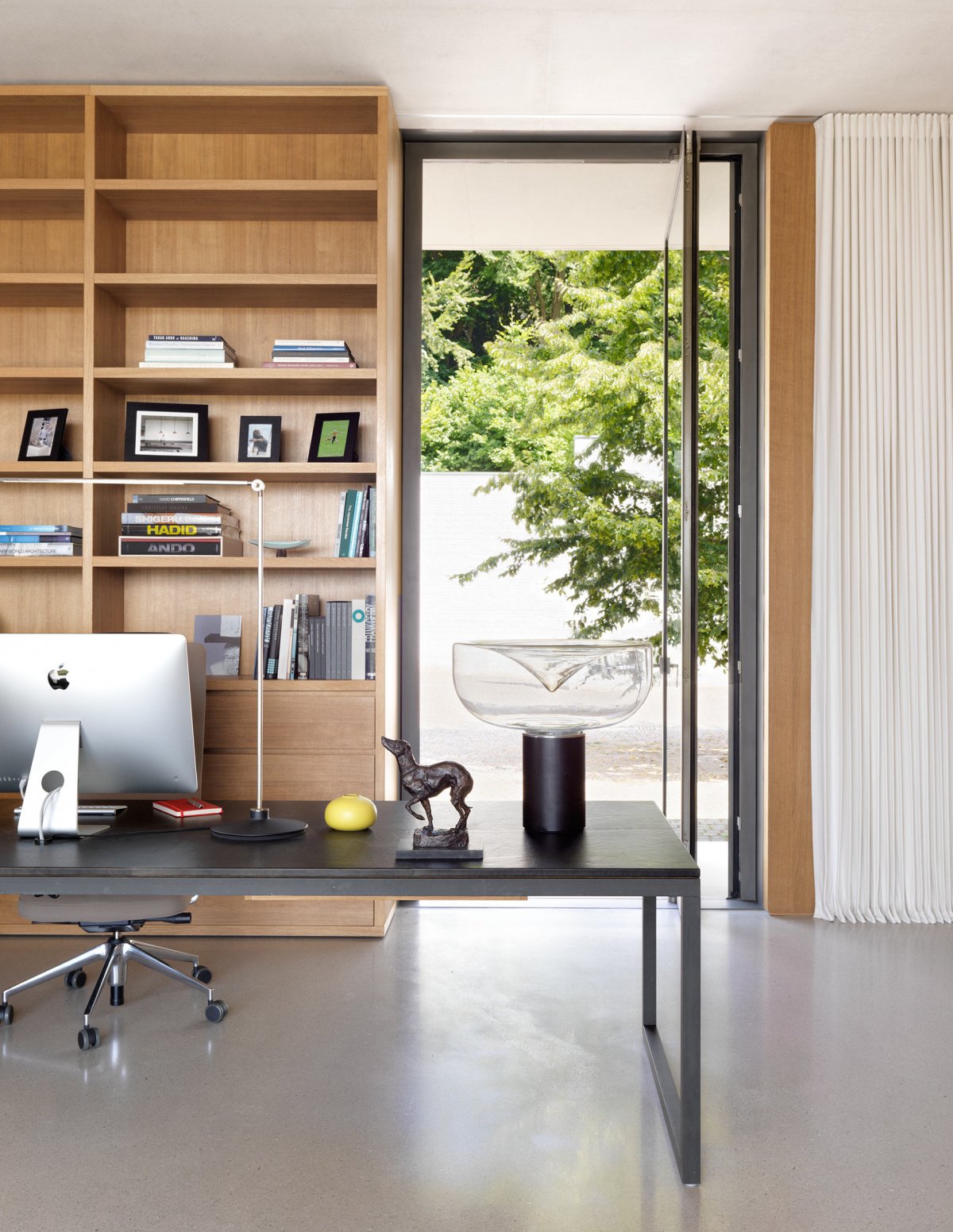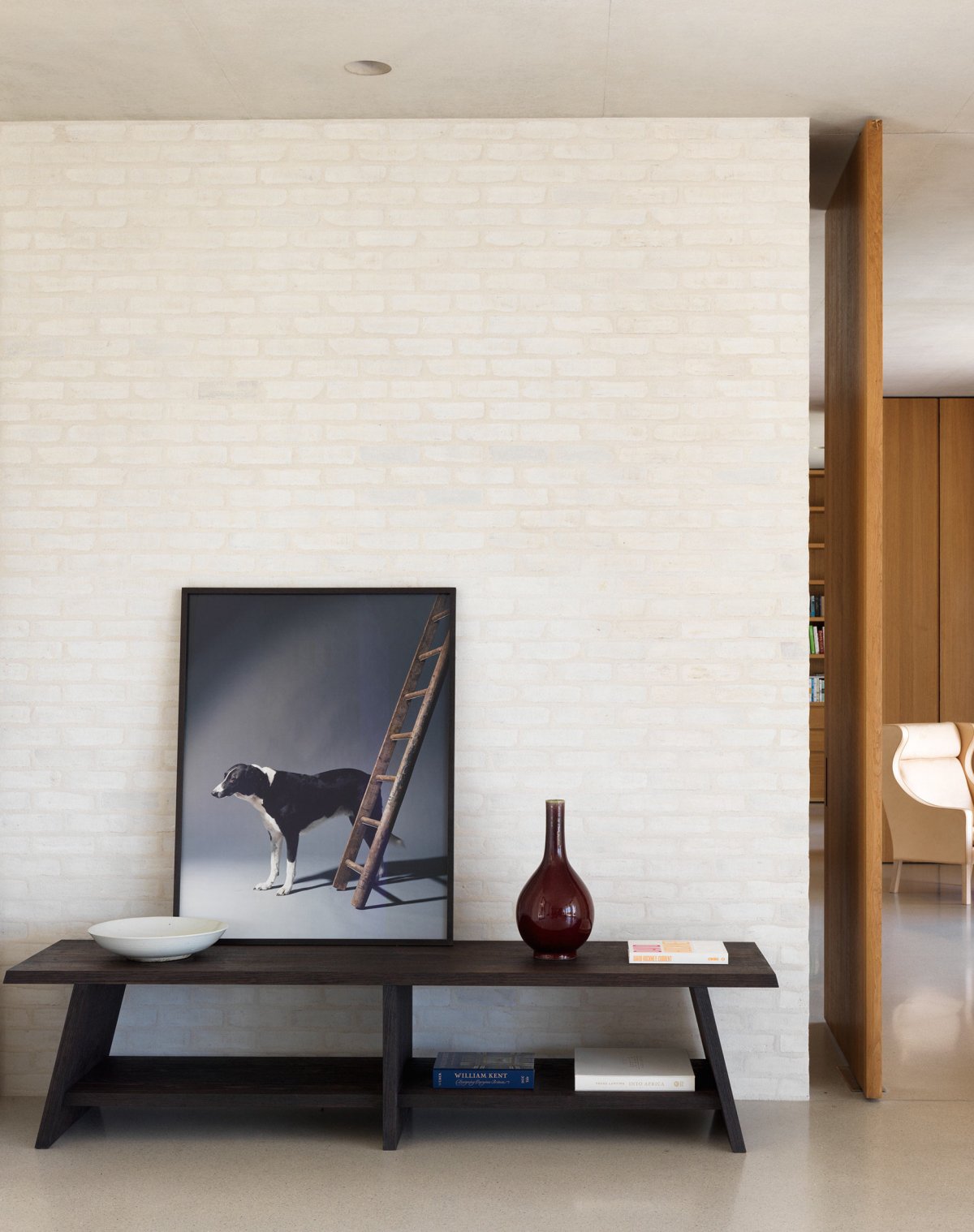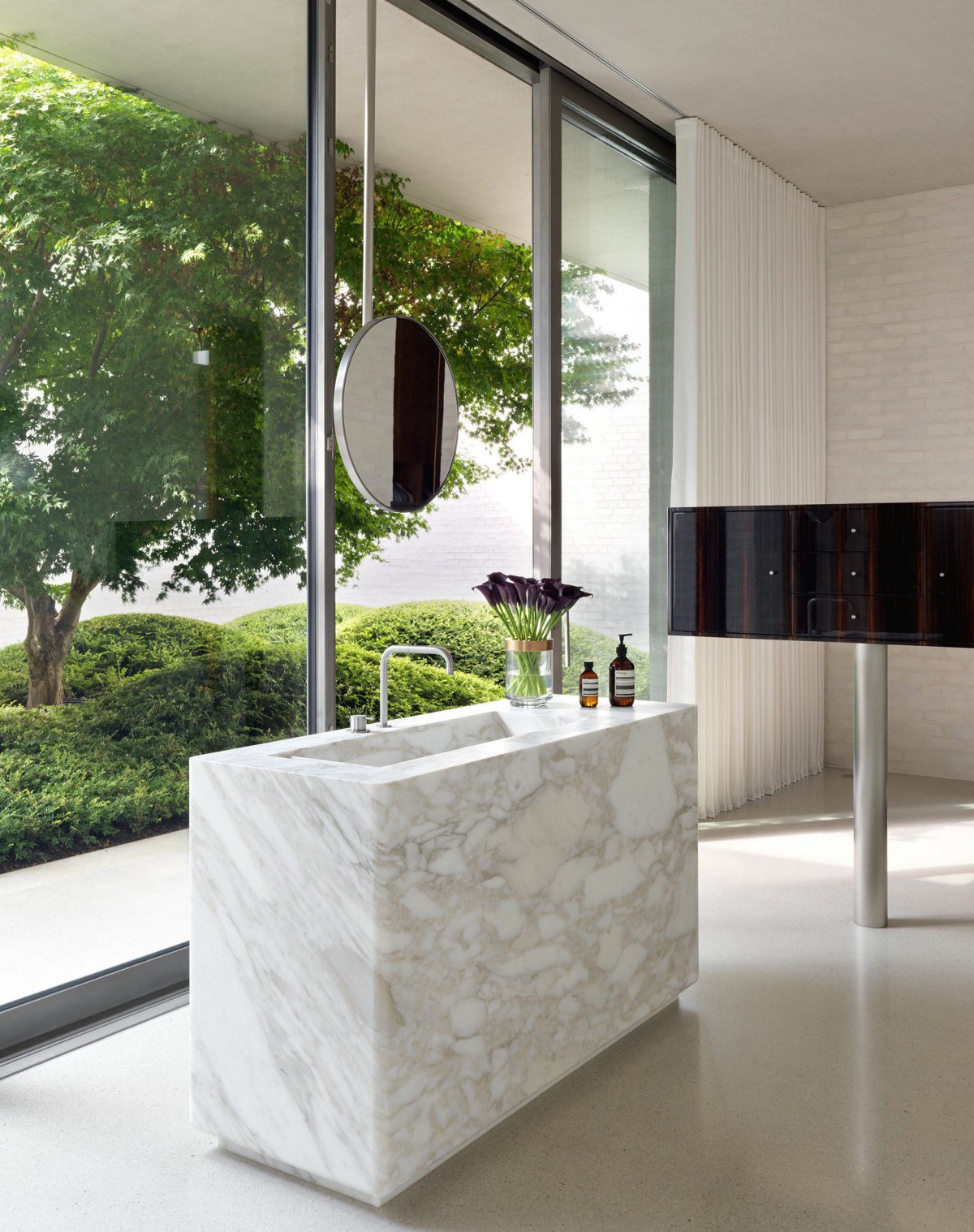
This family house is located on a large plot in the Chiltern Hills between the villages of Skirmett and Hambleden. The Chilterns form a long stretch of rolling chalk downs that run through eastern and southern England with over twenty per cent covered by woodland, making it one of the most heavily wooded areas in the country. It was designated an Area of Outstanding Natural Beauty in 1965.
The site was previously occupied by a two-storey house with a number of outbuildings including two garages, a summer house, large stables, a gym, a greenhouse and an outdoor swimming pool. The development presented an opportunity to restore a typical landscape by removing all conflicting features that had been superimposed onto it. In addition, conifers and other recent planting within and around the original woodlands were removed.
Presenting itself as a large dam-like earthwork, the single-storey house is embedded in a field facing south-west towards the valley. A deep loggia stretching across the entire width of the building mediates between the private interior space and the expansive landscape. The main living spaces open onto the loggia, while the ancillary rooms, further into the house, open onto smaller courtyards. The courtyards vary in character and provide close contact with nature while the main living quarters offer expansive views into the valley.
The building, accessible via a ramp at the north-east of the site, is essentially buried in the landscape. The largest of the four sunken courtyards becomes a working area reminiscent of a traditional farmyard. It also provides access to the various areas of the house and connects visually to the land below through an opening to the loggia. This opening also separates the guest quarters from the main body of the house.
The concrete roof is covered with topsoil from the site and planted with native grasses, while the walls are made of brick, left exposed both inside and out. The white colour of the bricks and the lime mortar is reminiscent of the chalk beneath the house. The house appears as a natural escarpment in the landscape while affirming itself as a man-made structure.
- Architect: David Chipperfield
- Photos: Rik Nys Richard Davies
- Words: Qianqian

